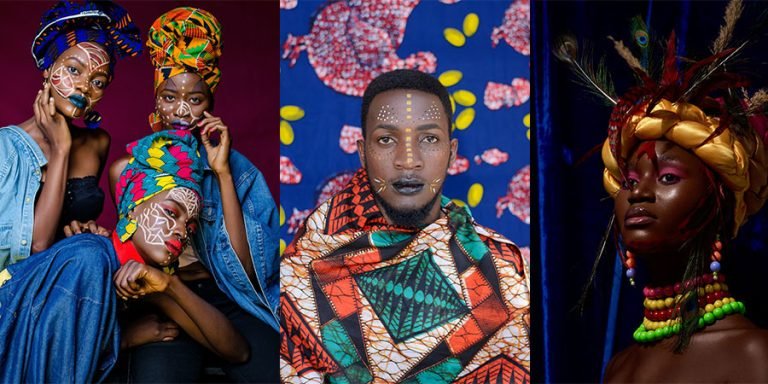Source: Africa Publicity
At a marketplace in Marrakesh, Morocco, Amina, a young linguistics student from Rabat, wandered through the myriad of stalls. The vibrant chatter of vendors hawking their wares in Arabic, Berber, and French filled the air. Amina was on a mission to explore the intricate relationship between language and culture, a topic she had been passionately studying for years.
Amina’s journey began with a simple question: How do language and culture influence each other? Morocco, with its rich tapestry of languages and cultural influences, seemed like the perfect place to start. She knew that language is not just a means of communication but a vessel carrying the essence of a people’s identity, history, and worldview.
Her first stop was a Berber village in the Atlas Mountains. Here, she met Omar, an elder who spoke the ancient Amazigh language. Through Omar, Amina learned that the Berber language was not just a means of daily communication but a vital part of their cultural heritage. The Amazigh language carried stories, proverbs, and songs that had been passed down through generations. It was through these oral traditions that the Berber people preserved their history and values.
Omar explained to Amina how the Berber people’s relationship with nature was intricately woven into their language. Specific words described the different types of soil, the varying stages of a plant’s growth, and the distinct phases of the moon. This linguistic richness reflected their deep connection to the land and their agricultural practices. Through the Berber language, Amina saw how a culture’s environment shapes its vocabulary and expressions.
From Morocco, Amina traveled south to Mali, where she met Fatoumata, a griot, or traditional storyteller. Fatoumata spoke Bambara, a language rich with oral literature. Griots like her were the custodians of Mali’s history, preserving it through epic tales, songs, and poems. Through Bambara, they passed down lessons of morality, historical events, and genealogies. Amina marveled at how language served as a living repository of a people’s collective memory.
Fatoumata shared with Amina the story of Sundiata Keita, the founder of the Mali Empire. As she listened, Amina realized that the rhythm and melody of the Bambara language added depth and emotion to the tale. The language’s musicality and structure were integral to the storytelling tradition, demonstrating how cultural practices can shape linguistic features.
Next, Amina journeyed to Nigeria, a country with over 500 languages. She focused on Yoruba, spoken by a significant portion of the population. In Lagos, she met Adewale, a Yoruba linguist and cultural enthusiast. Adewale explained the concept of “ìwàpẹ̀lẹ́,” which means gentle character, a core value in Yoruba culture. This concept was deeply embedded in the Yoruba language, reflecting the importance of community, respect, and moral integrity.
Adewale took Amina to a Yoruba naming ceremony, where she witnessed how names were carefully chosen to reflect personal and communal aspirations. Yoruba names often conveyed hopes, historical references, or spiritual beliefs. For instance, the name “Adebayo” means “the crown meets joy,” symbolizing the parents’ joy and pride. Amina saw how language was a tool for conveying cultural values and social expectations.
Her exploration then led her to Ethiopia, where she delved into Amharic, the official language. In Addis Ababa, she met Tsegaye, a poet and teacher. Tsegaye introduced her to the ancient Ge’ez script, still used in the Ethiopian Orthodox Church. He explained how religious texts and liturgical music in Ge’ez had a profound impact on Ethiopian culture, preserving religious and historical narratives for centuries.
Through Tsegaye, Amina learned about the significance of proverbs in Amharic. Ethiopian proverbs were concise expressions of wisdom, reflecting societal norms and philosophical views. For instance, the proverb “በሀብት ማደርያ ይበዛል” (behābiti maderya yibezali) means “By habit, the hut becomes a palace,” emphasizing the value of consistency and hard work. Amina noted how proverbs in Amharic encapsulated the ethical and moral teachings of Ethiopian society.
Continuing her journey, Amina traveled to Kenya, where she explored Swahili, a language spoken widely across East Africa. In Mombasa, she met Juma, a Swahili teacher and cultural guide. Juma explained how Swahili, with its Bantu roots and Arabic influences, was a product of centuries of trade and cultural exchange along the East African coast.
Juma highlighted the importance of the Swahili concept of “uhuru,” meaning freedom. He recounted the history of the Swahili coast, where the struggle for independence and the spirit of resilience were deeply embedded in the language. Amina saw how historical experiences shaped the linguistic identity of the Swahili people, embedding the values of freedom and community in their language.
Amina’s final destination was South Africa, a land of immense linguistic diversity. In Cape Town, she focused on Xhosa, one of the country’s eleven official languages. She met Nokuthula, a Xhosa teacher and cultural activist. Nokuthula introduced her to the concept of “ubuntu,” meaning humanity or the belief in a universal bond of sharing that connects all humanity. This concept was fundamental to Xhosa culture and was expressed in everyday language and social interactions.
Nokuthula took Amina to a traditional Xhosa gathering, where she experienced the communal singing and storytelling. The rhythmic patterns and clicks of the Xhosa language added a unique texture to their cultural expressions. Amina realized how the linguistic features of Xhosa, such as its distinctive clicks, were not just sounds but carriers of cultural identity and social cohesion.
As Amina reflected on her journey, she saw a common thread: language and culture are inextricably linked, each shaping and reflecting the other. In every region she visited, the languages she encountered were not mere tools of communication but living embodiments of cultural heritage, values, and history.
Amina returned to Rabat with a deeper understanding of the profound connection between language and culture. She realized that to truly understand a people, one must listen to their language, for within its sounds, words, and structures lie the stories, beliefs, and essence of their identity. Her journey through Africa had not only enriched her knowledge but also deepened her appreciation for the diverse linguistic and cultural landscapes that make up the continent.
In her essay, Amina wrote about the Berber’s connection to nature, the Bambara’s oral traditions, the Yoruba’s cultural values, the Amharic proverbs, the Swahili spirit of freedom, and the Xhosa concept of ubuntu. She emphasized that language is not just a mirror of culture but a vessel that carries it through time, preserving the past and shaping the future. Through her experiences, Amina had come to see language as the heart of culture, beating with the rhythm of a people’s collective soul.








